Taipei is certainly not short of cake shops, but there is a great gulf of technical skill and inherited tradition that separates what Ron Lin (林廷隆), director of the Taiwan Gateaux Association (台灣蛋糕協會), describes dismissively as “sweets,” and the true art of the pastry chef. While sweets still dominate the shelves, Taiwan has recently seen a remarkable growth in shops selling high-quality French pastries, one of the earliest being the Le Bouquet (繽紛蛋糕房) patisserie of the Ambassador Hotel, which was followed by a host of boutique operations such as Taipei’s 15eme Patisserie (15區法式烘焙) and Boite de Bijou (珠寶盒法式點心坊), and chains such as Cafe 85℃ (85℃咖啡蛋糕烘焙專賣店). A more sophisticated public wants to move on from Black Forest gateau and tiramisu to more creative concoctions. The Taiwan Cake Show (台灣蛋糕博覽會), which will be held this weekend, aims to satisfy that demand.
At the stylish offices of the Taiwan Gateaux Association, Lin pulls up images from a laptop and creates a slide show of gem-like creations, many of them standards of the French patisserie as well as modern variations made by local chefs such as Jen Chun-jung (簡純榮), who helped establish the Ambassador’s Le Bouquet. Some of the cakes, with their elaborate fretwork of chocolate and sugar, are works of edible art. The creation of such cakes will be the center piece of the Taiwan Cake Show, as local chefs compete for the 7th Taiwan Gateaux Skills Trophy (台灣GATEAUX盃蛋糕技藝競賽). The elaborate structures, which in the case of sugar sculptures, might stand as high as 80cm, are architectural in their complexity, and seem a very long way indeed from the world of afternoon coffee and cakes.
“Why do we need this sort of thing?” Lin asked rhetorically. “It’s all about improving skills. To achieve this level in their art, they must research new materials and techniques, and this is a spur for the development of new products. Only then will we have innovation. ... Ultimately for the consumer, it means being able to taste something more than the same old standards.”
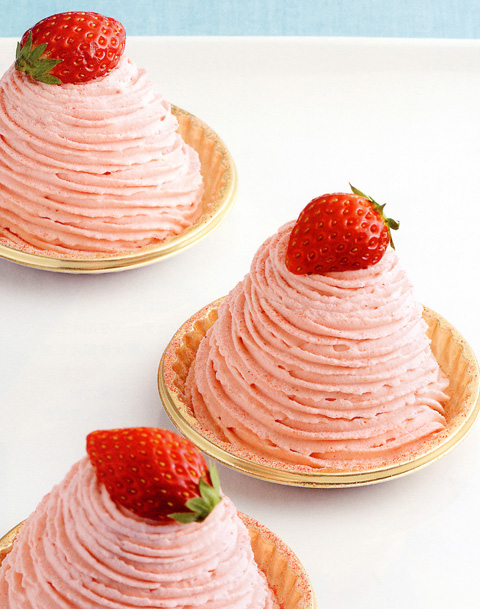
PHOTOS COURTESY OF THE TAIWAN GATEAUX ASSOCIATION
In order to spur innovation and develop skills, the Taiwan Gateaux Association will be bringing over instructors from the Ecole de Patisserie de Tokyo (東京制菓學校) to conduct demonstrations during the show. “Many of Taiwan’s pastry chefs have come up through an apprenticeship system. They have never had the chance to really study at a pastry school. ... With the new generation, more and more are going to study overseas, and with more students, there will be a higher level of competition,” Lin said.
Wu En-tau (吳恩陶), the assistant pastry chef at Le Bouquet who has worked with the French-trained Chef Jen since the patisserie’s creation, said the main challenge was to create cakes that would be deemed worthy of the high price tags placed on them. “At Le Bouquet, we set out to create a really high-end product, so that for any particular kind of cake, we seek to find ways of making it worth the (high) price that the customer pays for it. Great emphasis is placed on technique and in incorporating different layers. The number of ingredients we use is much larger than for most high street bakeries, and then great emphasis is also placed on ornamentation,” he said.
Wu is a member of the new generation of chefs who have undergone formal training in the culinary arts. The location of choice for most aspiring Taiwanese patissiers is Japan. “The profession for this kind of baking is simply too small in Taiwan,” Lin said. The Taiwan Gateaux Skills Trophy is an attempt to foster competitiveness among local chefs, but though Taiwanese chefs have made the occasional splash in international competition, Lin said that the overall standard still has a long way to go.
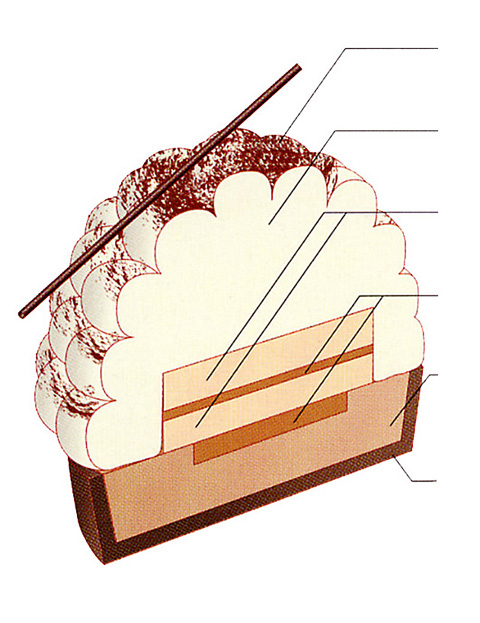
PHOTOS COURTESY OF THE TAIWAN GATEAUX ASSOCIATION
“People here tend to be somewhat short sighted; they only push themselves when its time for a competition,” Lin said.
Lin pointed to the 50 or so years that Japan has been developing its patisserie tradition and, among numerous publications, has one giving profiles of top Japanese patissiers. “To really understand the product, you must know where it comes from,” he said, outlining the transmission from one patissier to another. As the slide show continues, Lin points to cakes as products of this or that chef, as one might point to a painting and say that it was a Monet. “You can see the French foundations, and then you see the Japanese influence,” he said, calling up relevant images.
For Lin, his “patisserie world” is dotted with master-pieces, and he is full of admiration for the artists who create them. But as head of the Taiwan Gateaux Association, he accepts that in cakes as in art, there is the work of the academy, and also the work of the marketplace. “Ultimately, for a big chain, its all about cost,” he said. But for all his love of the masters, Lin embraces the popular market, and shows off cranberry and mango mooncakes developed for the 7-Eleven chain as examples of innovation. “There are endless permutations, in my patisserie world,” he said. “It’s never ending.”
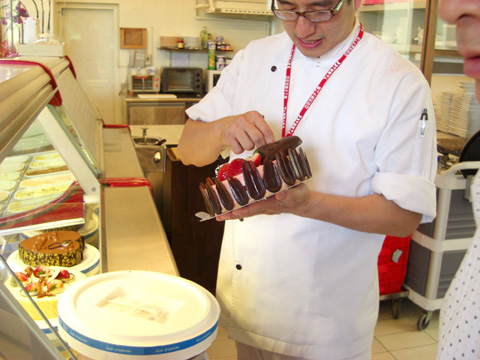
PHOTOS COURTESY OF THE TAIWAN GATEAUX ASSOCIATION
Some aspects of this world will be on display at the Taiwan Cake Show this weekend. This year, the focus is on the competition, divided between a professional category that includes tests of artwork in sugar, chocolate and marzipan, as well as working with multiple layers and mousses, and demonstrations by top Japanese patissiers. It will be held at Y17 (台北市青少年育樂中心), a smaller venue than the World Trade Center, where it has previously been held. According to Lin, the change in venue enables the event to focus on the cake show’s professional aspects. “This is an effort to promote this profession to the public,” Lin said. “What I want is a forum to hone the skills of local patissiers, so that they will have a better sense of what is happening in the world of cakes, to sharpen their skills. ... It’s about competition and exchange.”
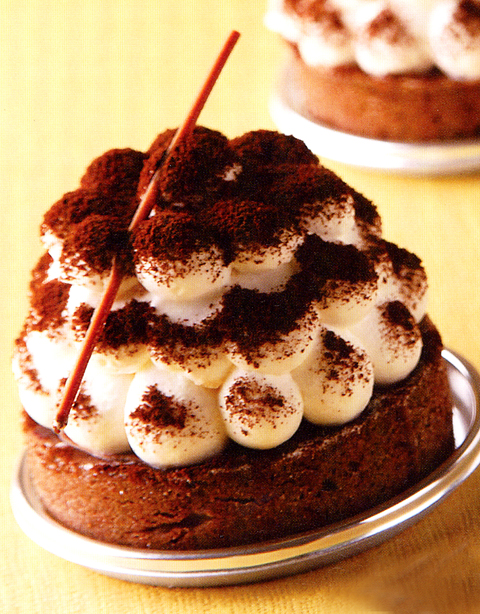
PHOTOS COURTESY OF THE TAIWAN GATEAUX ASSOCIATION
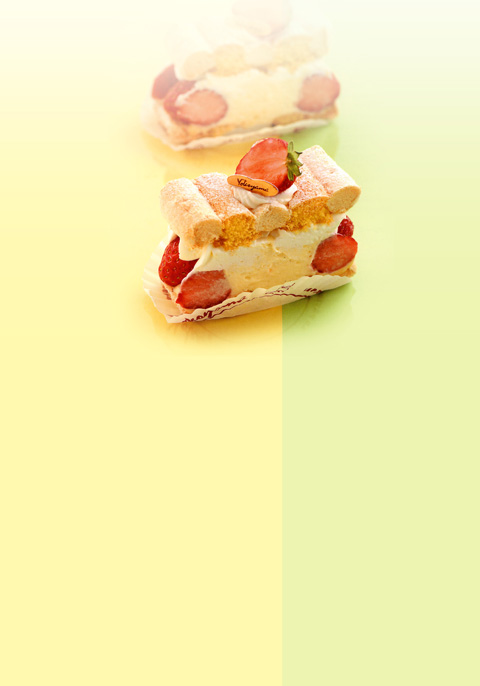
PHOTOS COURTESY OF THE TAIWAN GATEAUX ASSOCIATION

The canonical shot of an East Asian city is a night skyline studded with towering apartment and office buildings, bright with neon and plastic signage, a landscape of energy and modernity. Another classic image is the same city seen from above, in which identical apartment towers march across the city, spilling out over nearby geography, like stylized soldiers colonizing new territory in a board game. Densely populated dynamic conurbations of money, technological innovation and convenience, it is hard to see the cities of East Asia as what they truly are: necropolises. Why is this? The East Asian development model, with

June 16 to June 22 The following flyer appeared on the streets of Hsinchu on June 12, 1895: “Taipei has already fallen to the Japanese barbarians, who have brought great misery to our land and people. We heard that the Japanese occupiers will tax our gardens, our houses, our bodies, and even our chickens, dogs, cows and pigs. They wear their hair wild, carve their teeth, tattoo their foreheads, wear strange clothes and speak a strange language. How can we be ruled by such people?” Posted by civilian militia leader Wu Tang-hsing (吳湯興), it was a call to arms to retake

Desperate dads meet in car parks to exchange packets; exhausted parents slip it into their kids’ drinks; families wait months for prescriptions buy it “off label.” But is it worth the risk? “The first time I gave him a gummy, I thought, ‘Oh my God, have I killed him?’ He just passed out in front of the TV. That never happens.” Jen remembers giving her son, David, six, melatonin to help him sleep. She got them from a friend, a pediatrician who gave them to her own child. “It was sort of hilarious. She had half a tub of gummies,

The wide-screen spectacle of Formula One gets a gleaming, rip-roaring workout in Joseph Kosinski’s F1, a fine-tuned machine of a movie that, in its most riveting racing scenes, approaches a kind of high-speed splendor. Kosinski, who last endeavored to put moviegoers in the seat of a fighter jet in Top Gun: Maverick, has moved to the open cockpits of Formula One with much the same affection, if not outright need, for speed. A lot of the same team is back. Jerry Bruckheimer produces. Ehren Kruger, a co-writer on Maverick, takes sole credit here. Hans Zimmer, a co-composer previously, supplies the thumping